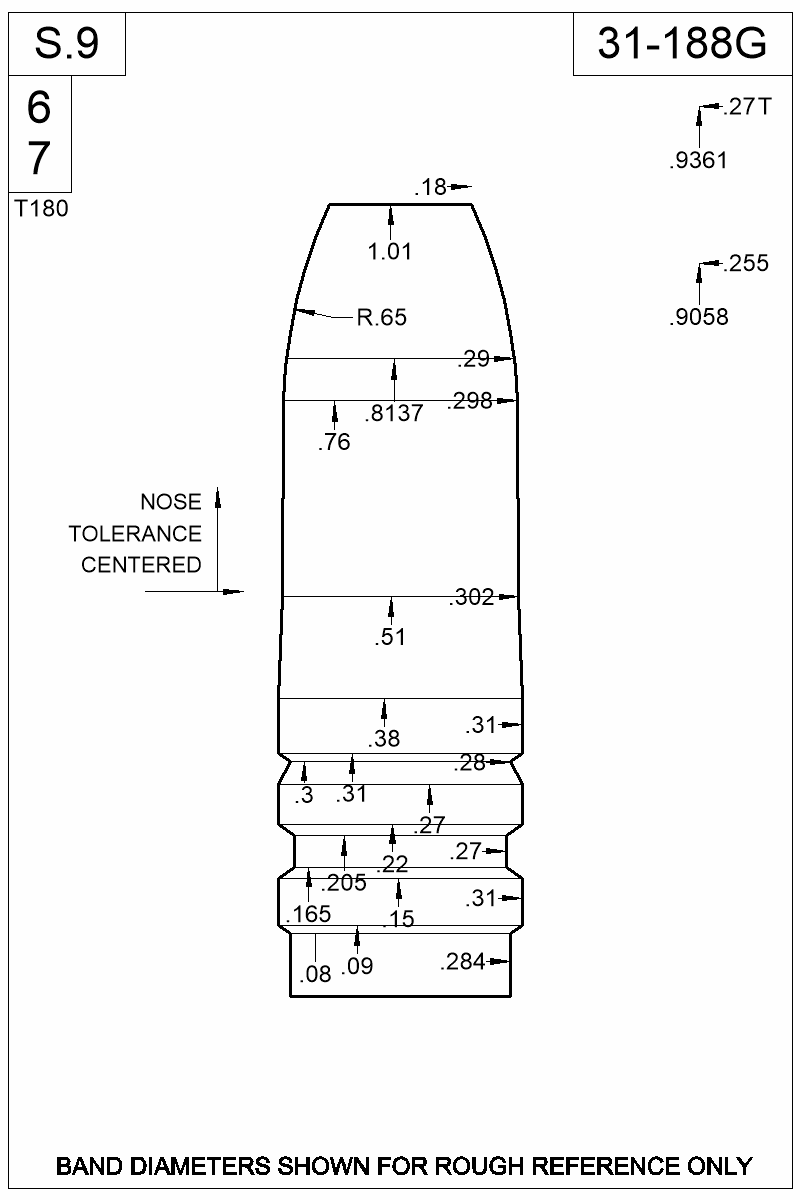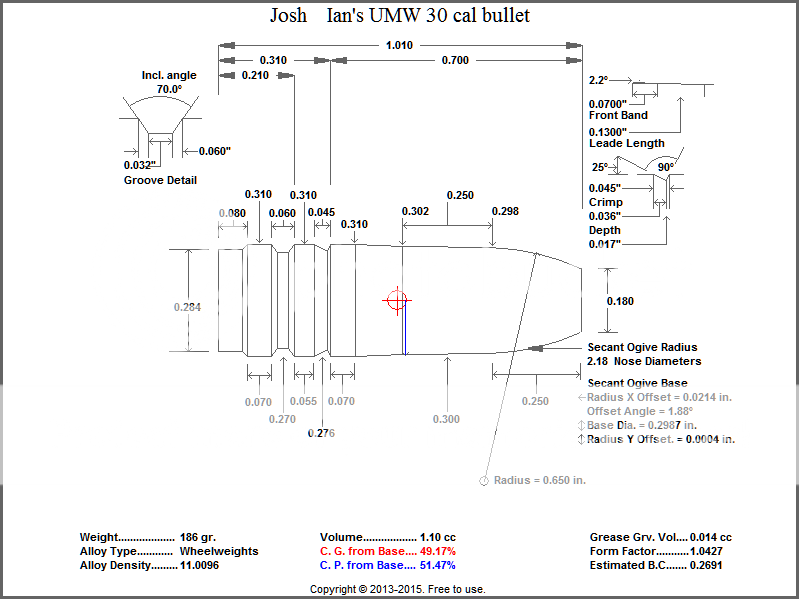Hey, I've been in the above group before.
Why yes, yes you have......in fact you were kind enough to draw this 188G mould up with your software so (among other things) we could see exactly what Fiver was talking about above with bullet CG/CP. I like a minimum of -2.5% on CG, based purely on actual shooting of everything from .22 to .45 caliber and numerous hollow point designs. Remember, I intended to modify this mould with a round nose or hollow point to bring the delta up some more, and also Tom took away less metal from the crimp groove so that adds a tiny bit more mass to the back end. So far that hasn't proven necessary, though. The NOE bullet, even with the smaller meplat, plain base, and single lube groove has a delta of just 1.55% while the 188G is 2.3%. That difference is in the self-aligning nose and the 188G's bearing surface distribution. Also note that the shallow nose angle is at or slightly less than most .30-caliber case body angles (except the 7.62mm Soviet), so there is less chance of the exposed nose getting any bad engraving habits started during the final half inch of the chambering operation. That's just a good side effect, though, the nose angle really has more to do with launch and common throat wear angles, an idea which was not mine but I have borrowed to good effect. Look at the MP .30 Hunter and .30 "Silhouette" designs to find similar nose profiles which lend themselves well to semi-auto use and to a variety of .30-caliber rifle throats, particularly at elevated speeds.
I've said it a bunch but this is a good time to say it again: When shooting at midrange and lower velocities (1800 fps and below in most .30-caliber examples), these nuances of nose profile and self-aligning properties (as well as alloy and exact powder choice) matter MUCH less and you can practically get away with "murder" as long as the nose is large enough and long enough to firmly contact some part of the throat and/or rifling. This is why the eye rolls start when I criticize nose profiles for a given purpose...."but but but parallel or straight-taper nose profiles shoot great for me"....(at 1300 fps). Sure they do, no one is questioning that, but go ahead and bump it on up to 2400 fps in a ten twist and tell me how that parallel bullet works in your straight-taper '06 throat, or worn-down .308 throat, or in a semi-auto. Fiver has a parallel bullet that will do that, but it has to fit a certain throat shape exactly and be cast of a more flow-resistant alloy to work. Fit is King, and alloy/powder/primer = the dynamic part of fitment at higher velocities, so don't forget that part when selecting a bullet design for a particular purpose. For moderate use in a normal twist (not a slow one), the NOE 208-grain PB will be just fine.
One more thing: John Ardito would NOT have designed the nose the way the group working with NOE did unless he was only putting the gas check in the case neck and had a fresh throat reamed to that exact, long, straight taper. I have one of Ardito's moulds and that ain't it. The discussions on the NOE forum from a couple years ago regarding a potential custom run of these missed most of the high points of his design on this one and incorporate none of the magic of the 311679. For the record, the 188G isn't a 311679 copy either, it was intended to be a little more versatile and to move a little faster, but does have two particular features that also made the 679 shoot: Self-aligning nose (which even F. W. Mann proved out-shot breech-seated bullets), and more supporting surface area on the nose than on the driving bands, which proves to be a critical factor to accuracy (along with matching throat shape) after the bullet moves the first 1/8" forward and until the gas check is entering the throat. Too much lateral support and too little flex (via lube grooves) in the back end will veer the nose at launch if the nose isn't firmly supported and aligned straight...unless your case neck clearance is zero.
Josh's drawing, note the CG/CP relationship compared to the NOE 208 grainer:


